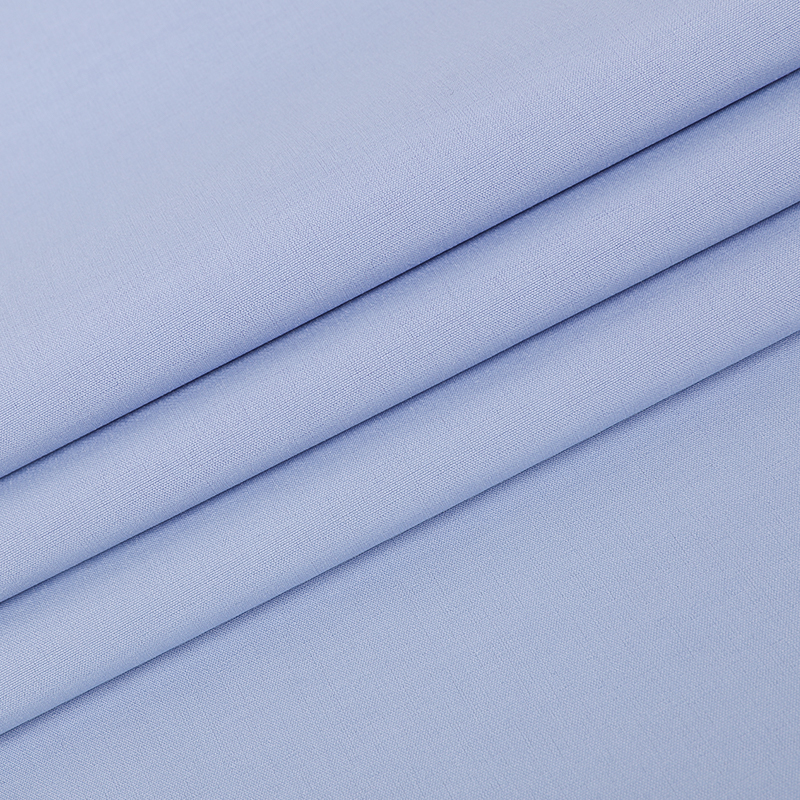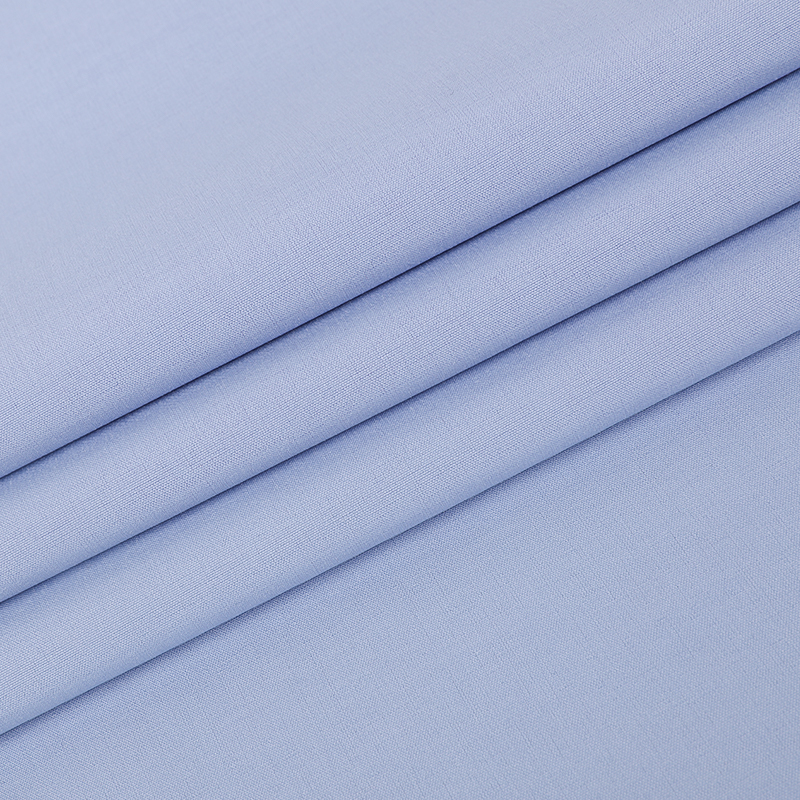If you are interested in some of our products, please feel free to visit our website or contact us for detailed information.

Polyester Textile Fabrics are widely used in various types of clothing, home furnishings and industrial products due to their excellent durability, wrinkle resistance and easy washability. However, to keep polyester fabrics looking their best, proper cleaning and maintenance methods are crucial.
1. Cleaning method
Check clothing labels: First, read the labels on your clothing carefully to learn the manufacturer's recommended cleaning methods. This helps avoid damage or deformation of clothing caused by incorrect cleaning methods.
Screen for color: Polyester fabrics have brighter colors, but they may fade during laundering. Therefore, it is recommended to wash dark and light-colored clothing separately to avoid mixing of colors.
Choose a detergent: Use a neutral detergent to clean polyester fabrics. Avoid using detergents containing bleach or strong alkalis as they may damage the fiber structure of the fabric.
Control the water temperature: When cleaning, the water temperature should not be too high. It is recommended to control the water temperature between 30°C-40°C. High temperatures may cause fabrics to shrink or deform.
Soaking and washing: Soak clothes in detergent solution for about 10-15 minutes before washing. This helps dissolve stains and improves cleaning results. Then, scrub the garment gently, avoiding excessive force that may damage the fabric.
Choose a wash method: Hand washing is the best way to clean polyester fabrics because you have better control over the strength of the wash and the amount of detergent used. If using a washing machine, choose a gentle wash cycle such as Hand Wash or Delicate Cycle.
2. Maintenance methods
Avoid direct sunlight: Polyester fabrics are sensitive to sunlight, and long-term exposure may cause fading or deformation. Therefore, when drying clothes, you should choose a cool and ventilated place to avoid direct sunlight.
Use a dryer: Spread the materials to be dried evenly on the material tray, and try to make the material distribution thin and even for better hot air circulation and drying. According to the nature and requirements of the material, set the temperature, wind speed and other parameters of the dryer. Generally speaking, it is more appropriate to control the temperature around 50-60°C, but the specific temperature needs to be adjusted according to the characteristics of the material. Turn on the dryer fan or heating system to start hot air circulation. During the drying process, the items to be dried need to be constantly turned to ensure that the materials are evenly heated and dried. During the drying process, it is necessary to observe the changes in the material, such as the evaporation of water on the surface of the material. If abnormal conditions are found, such as unstable temperature, overheating, etc., the equipment parameters need to be adjusted in time or shut down for inspection. After the material is dried, turn off the dryer fan and heating device, wait for the equipment to cool to a safe temperature, and then open the discharge door to discharge the dried finished product.
Ironing precautions: If you need to iron polyester fabrics, it is recommended to use a low temperature setting and put a damp cloth on it to avoid high temperature damage to the fabric. At the same time, don't stay in the same position for too long to avoid leaving ironing marks.
Storage method: When storing polyester fiber fabrics, they should be placed in a dry, ventilated, and dark place. Avoid contact with sharp objects or chemicals to avoid damaging the fabric. In addition, turn the clothes regularly and check whether there are insects or mildew, and take timely measures to deal with them.
Removing static electricity: Since polyester fiber fabrics easily generate static electricity, it is recommended to use antistatic agent before or after use. This helps reduce the uncomfortable effects of static electricity on fabrics and the human body.
Regular cleaning: To maintain the appearance and performance of polyester fabrics, regular cleaning is recommended. This not only removes stains and dust but also extends the life of the fabric.

1. Cleaning method
Check clothing labels: First, read the labels on your clothing carefully to learn the manufacturer's recommended cleaning methods. This helps avoid damage or deformation of clothing caused by incorrect cleaning methods.
Screen for color: Polyester fabrics have brighter colors, but they may fade during laundering. Therefore, it is recommended to wash dark and light-colored clothing separately to avoid mixing of colors.
Choose a detergent: Use a neutral detergent to clean polyester fabrics. Avoid using detergents containing bleach or strong alkalis as they may damage the fiber structure of the fabric.
Control the water temperature: When cleaning, the water temperature should not be too high. It is recommended to control the water temperature between 30°C-40°C. High temperatures may cause fabrics to shrink or deform.
Soaking and washing: Soak clothes in detergent solution for about 10-15 minutes before washing. This helps dissolve stains and improves cleaning results. Then, scrub the garment gently, avoiding excessive force that may damage the fabric.
Choose a wash method: Hand washing is the best way to clean polyester fabrics because you have better control over the strength of the wash and the amount of detergent used. If using a washing machine, choose a gentle wash cycle such as Hand Wash or Delicate Cycle.
2. Maintenance methods
Avoid direct sunlight: Polyester fabrics are sensitive to sunlight, and long-term exposure may cause fading or deformation. Therefore, when drying clothes, you should choose a cool and ventilated place to avoid direct sunlight.
Use a dryer: Spread the materials to be dried evenly on the material tray, and try to make the material distribution thin and even for better hot air circulation and drying. According to the nature and requirements of the material, set the temperature, wind speed and other parameters of the dryer. Generally speaking, it is more appropriate to control the temperature around 50-60°C, but the specific temperature needs to be adjusted according to the characteristics of the material. Turn on the dryer fan or heating system to start hot air circulation. During the drying process, the items to be dried need to be constantly turned to ensure that the materials are evenly heated and dried. During the drying process, it is necessary to observe the changes in the material, such as the evaporation of water on the surface of the material. If abnormal conditions are found, such as unstable temperature, overheating, etc., the equipment parameters need to be adjusted in time or shut down for inspection. After the material is dried, turn off the dryer fan and heating device, wait for the equipment to cool to a safe temperature, and then open the discharge door to discharge the dried finished product.
Ironing precautions: If you need to iron polyester fabrics, it is recommended to use a low temperature setting and put a damp cloth on it to avoid high temperature damage to the fabric. At the same time, don't stay in the same position for too long to avoid leaving ironing marks.
Storage method: When storing polyester fiber fabrics, they should be placed in a dry, ventilated, and dark place. Avoid contact with sharp objects or chemicals to avoid damaging the fabric. In addition, turn the clothes regularly and check whether there are insects or mildew, and take timely measures to deal with them.
Removing static electricity: Since polyester fiber fabrics easily generate static electricity, it is recommended to use antistatic agent before or after use. This helps reduce the uncomfortable effects of static electricity on fabrics and the human body.
Regular cleaning: To maintain the appearance and performance of polyester fabrics, regular cleaning is recommended. This not only removes stains and dust but also extends the life of the fabric.


 English
English 中文简体
中文简体 Español
Español Français
Français italiano
italiano








